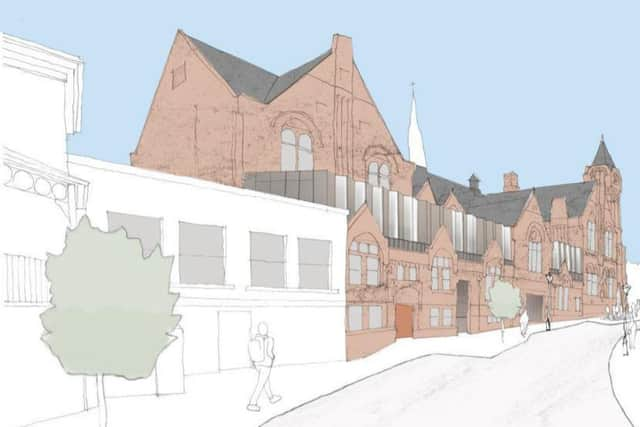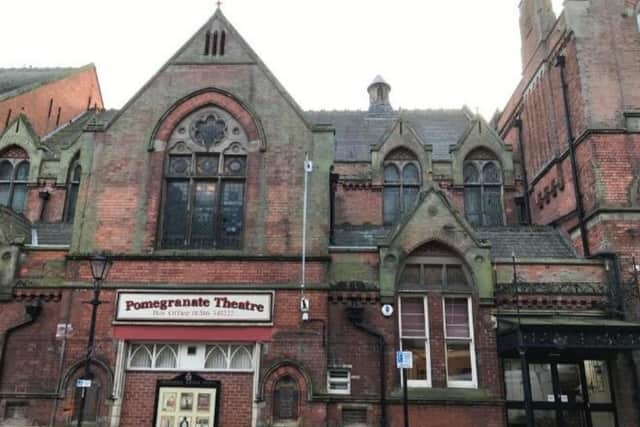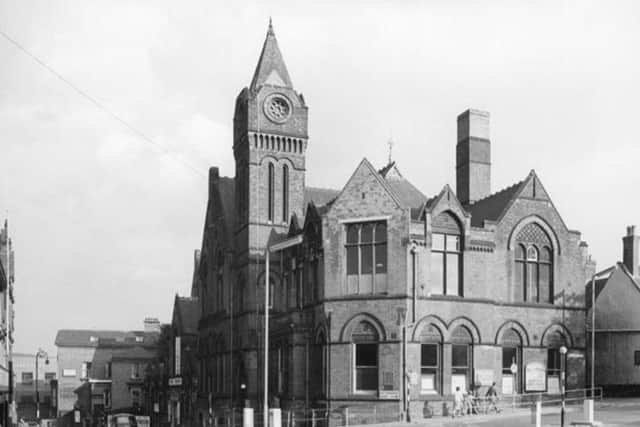Green light for £17million revamp of Stephenson Memorial Hall - including Pomegranate Theatre and Chesterfield Museum
and live on Freeview channel 276
The historic building, which incorporates the Pomegranate Theatre and Chesterfield Museum, will be closed for two years as it undergoes an extensive programme of renovation and extension, while retaining its original heritage features.
In a meeting of Chesterfield Borough Council’s Planning Committee on Monday (February 28), development management and conservation manager Paul Staniforth said one of the primary aims of the project was to create a facility with a single entrance and ‘improved accessibility and comfort’.
Advertisement
Hide AdAdvertisement
Hide AdHe continued: “Bigger shows, more diverse shows, bigger capacity – but at the same time creating what’s refered to in the council’s agreed masterplan as a ‘gateway impact’.”


Anthony Radford, cultural services manager, stated: “It’s a humungous investment for the council – nearly £17million.
“It’s got to be a stunning success.
“The building is going to be closed for over two years and therefore the expectation of this building is phenomonal.”
The vision for the hall features a single public entrance using the original doors on the Corporation Street side and returning the door currently used to access the museum to its original function as a window.


Advertisement
Hide AdAdvertisement
Hide AdUpon entry to the hall, visitors will be met with a set of stairs and elevator, which will take them up to a foyer area featuring a cafe, from where both the theatre and museum can be accessed.
The gallery in the auditorium will be brought forward by four rows and the seating arrangements altered to allow for more space and comfortable seating.
Flat-roofed extensions will be added to the front and rear of the premises in a modern style, which incorporates a zig-zag design with bronze panels on the front and zinc on the back to allow for more space on the interior.
The upper floors of the museum will be opened up to the public, making better use of the space.


Advertisement
Hide AdAdvertisement
Hide AdA total of three lifts have been incorporated into the design, as well as the addition of more accessible toilets and changes to the layout meaning 95 per cent of the premises will be accessible to wheelchair users, as opposed to only 43 per cent today.
However concerns were raised about the extent of the building’s accessibilty, with speaker Janet Murphy arguing that the turning circle was inadequate for certain wheelchair users.
Mrs Murphy said if the plans were approved her husband, who is in a wheelchair, would no longer be able to access the facility.
However archetect Simon Maddy stated the wheelchair turning circle met standard British requirements.
Advertisement
Hide AdAdvertisement
Hide Ad“We are very mindful about finding the best solution to accessibility and everyone being able to experience the whole building,” he added.
When finalising plans for the renovations, the authority used a disbility consultant, as well as liaising with disability groups to determine the best use of the space.
Mr Staniforth said that an assessment of the building, which was originally built in 1879, identified £2.5million of work was needed just to keep it operational.
He explained that the historic building has been operating with the assistance of a council a subsidy of £327,000 a year, so opportunities to increase revenue were a prime concern of the authority in order to reduce the use of financial resources.
Advertisement
Hide AdAdvertisement
Hide AdThis project is part of the council’s ambitious revitalisation plans for the town centre and is being paid for in part with £11million from its overall £20million allocation from the Government’s Levelling Up Fund.